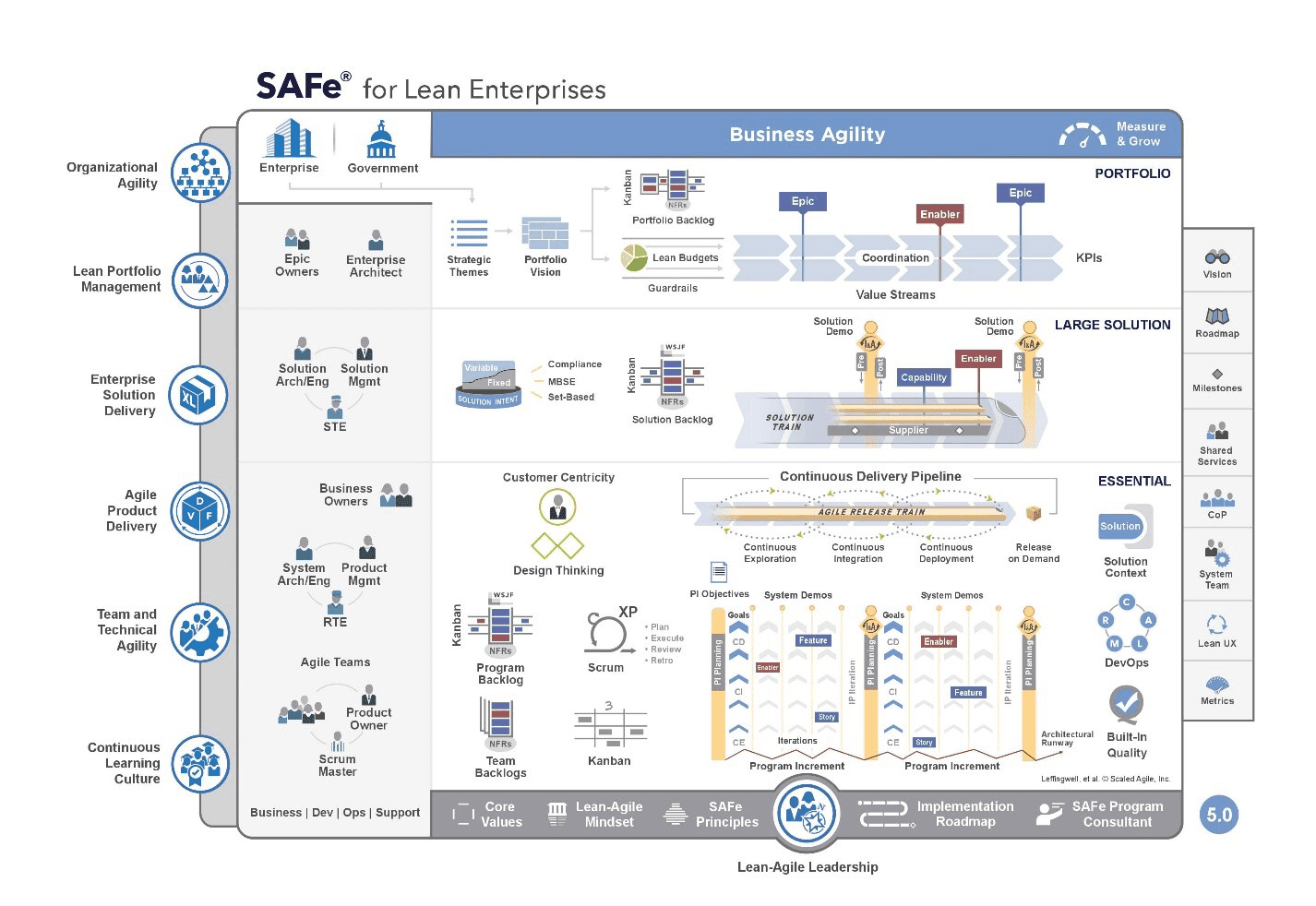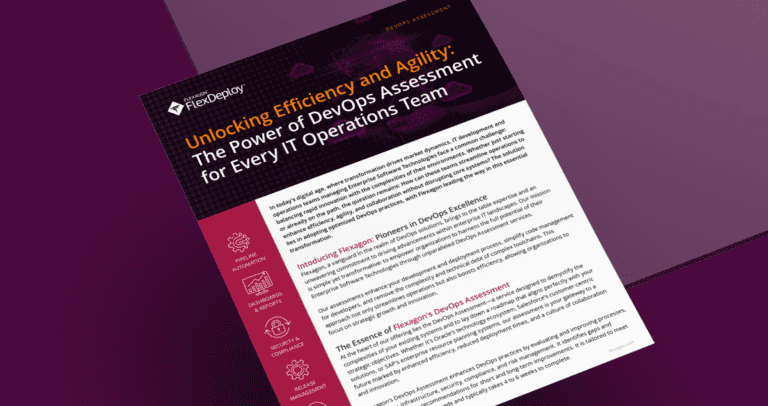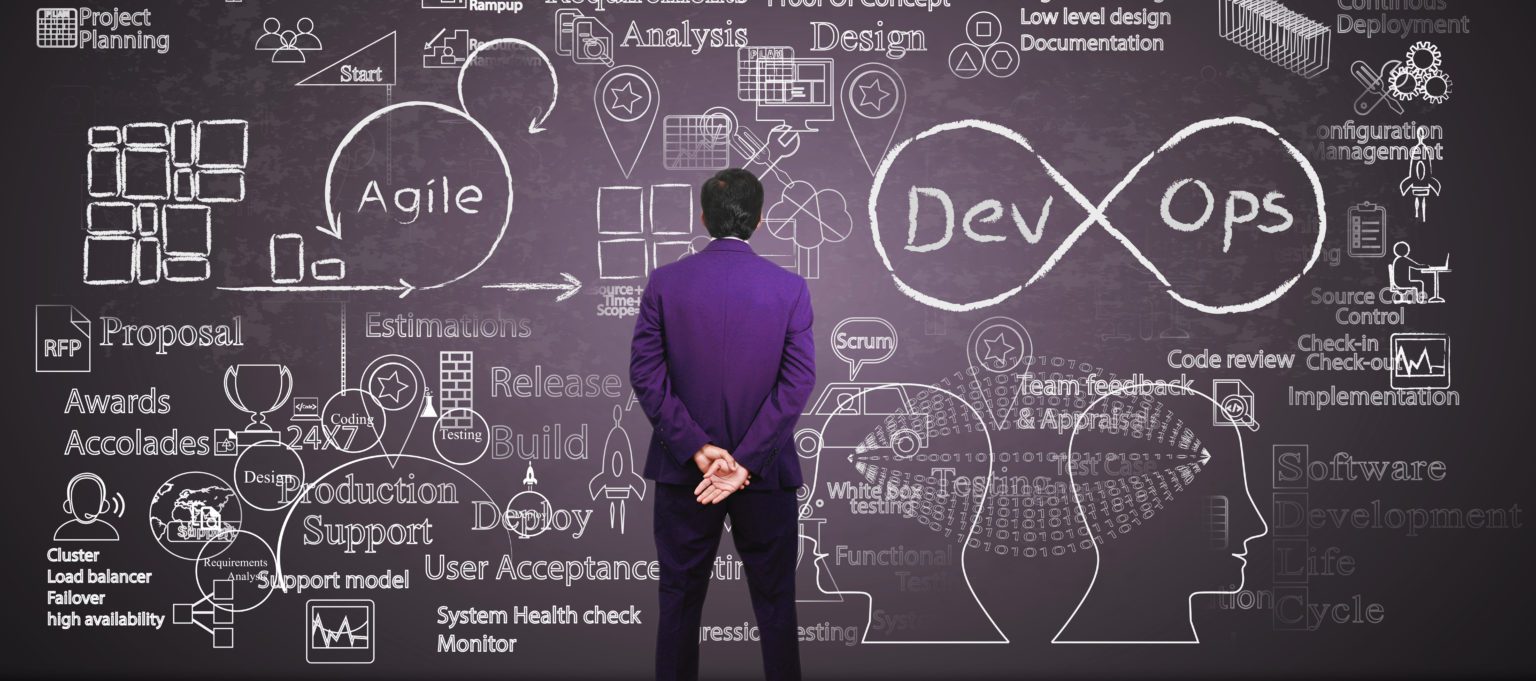We can all acknowledge that large projects are harder than small projects. This is to say that it is harder to:
- identify and coordinate dependencies across multiple teams
- maintain a prioritized backlog
- maintain accuracy and consistency in estimation
If, like me, you have worked in organizations that have successfully implemented scrum within your product teams, you are familiar with the scaling challenges across teams: managing dependencies, aligning and coordinating work, maintaining consistency and achieving agility at scale.
High quality adoption of Agile approaches at the team level are essential for success at scale, but a high quality agile team is not in, and of itself, sufficient. For many organizations that seek to scale Agile, sooner rather later, we need to address how to deal with multiple teams working on the same product. How can you best organize the teams to work cohesively on larger products? And, how do you deal with cross team dependencies?
The good news is that there are a number of agile scaling approaches, some sharing similarities and others differences. I’ve looked at the pros and cons of the most popular and used among customers I have interacted with. Regardless of the choice of agile scaling framework, supporting application development management tools will need to be set up accordingly, supporting distributed development, continuous integration, inspection and delivery.

The Nexus Guide
Incidentally, for those of you familiar with the updated Scrum Guide, there is now a Nexus Guide available at Scrum.org, and work is in progress on a further extension Nexus+ encompassing the scaling challenges of 100+ person efforts.
Nexus is a very logical and natural extension for existing Scrum teams, where the processes and roles are very familiar to Scrum practitioners. A new role, the Nexus Integration Team coordinates, coaches and supervises ensuring more attention to dependencies and interoperation between Scrum teams. Nested planning and retrospectives take group planning and process improvement seriously. A single common definition of DONE ensures consistency and avoids any of those awkward integration moments. While it doesn’t give guidance to larger portfolio problems, it is firmly focused on software development for a single product, and supports scaling from 3 to 9 scrum teams with a single Product Owner.

SAFe
SAFe has become extremely popular, in part as it describes the business aspects that other frameworks barely address and as such appeals to regulated top-down hierarchical organizations.
Based on lean economics helping teams ensure they deliver the highest value in the shortest time possible. Cadence and synchronization across teams reduces scaling issues, and it is supported by a large community practice, good quality training classes and role-based certifications.

LeSS
LeSS is essentially built on Scrum so is comfortable for practitioners and emphasizes systems thinking while transforming the organization from project to product focus.
Much like Nexus there is a single Product Owner with a single product backlog. LeSS expands to be larger than 8 teams by moving to LeSS Huge, through the addition of Area Product Owners.

Disciplined Agile Delivery (DAD)
Disciplined Agile Delivery (DAD), more often referred to as Disciplined Agile and is much more than Scrum, describing the whole software development lifecycle not just development. It incorporates Vision, Roadmaps, Enterprise Architecture, Release Management and Operations, and more. It also provides choices instead of specific guidance, supporting a diverse set of needs, for example from Agile Basic to Lean Startup. DAD focuses on large IT organizations with a diverse portfolio of work and high variation in project size, and companies transitioning from RUP.
As a leader in DevOps solutions, we offer a DevOps Assessment tailored to revolutionize your IT operations, ensuring you’re always a step ahead.

Which Agile Framework is Best?
There is some commonality across these Agile frameworks in particular around cross team coordination, management of risk, minimizing dependencies, improved integration coordination, joint planning and process improvement. I am often asked which agile framework is best and generally respond as follows:
Every software development and delivery situation are unique, as is the culture. As far as which framework will be right for each organization, I offer these guidelines without further assessment:
- If needing to scale up to “program” with multiple teams, I see adoption of Nexus or LeSS.
- If adopting a lean mindset, I have seen adoption of LeSS or SAFe.
- If seeking synchronized cadence across teams, I most often see adoption of Essential SAFe.
- If your goal is more enterprise business agility, SAFe is currently the most widely adopted.
The Future of DevOps
Regardless of the Agile framework you choose, a comprehensive and open DevOps platform can help you to be more successful. Flexagon is the exclusive provider of an integrated DevOps platform that tames enterprise platform complexity. FlexDeploy makes it simple for global leaders such as Pella, Heathrow and Queensland Government to accelerate continuous innovation through secure, quality software—achieving more customer value at lower cost with less risk.
Recently, we sat down with Forrester who provided strategic guidance on how enterprises can better optimize their software delivery efforts. Watch Powering the Future of DevOps Today for a view into recent software delivery trends and consideration for your development and delivery processes.



